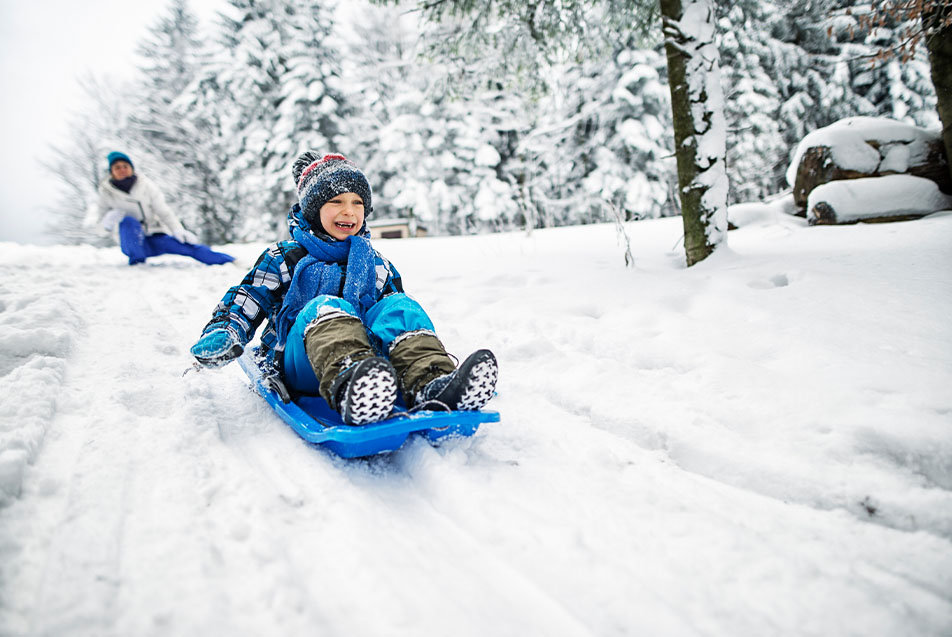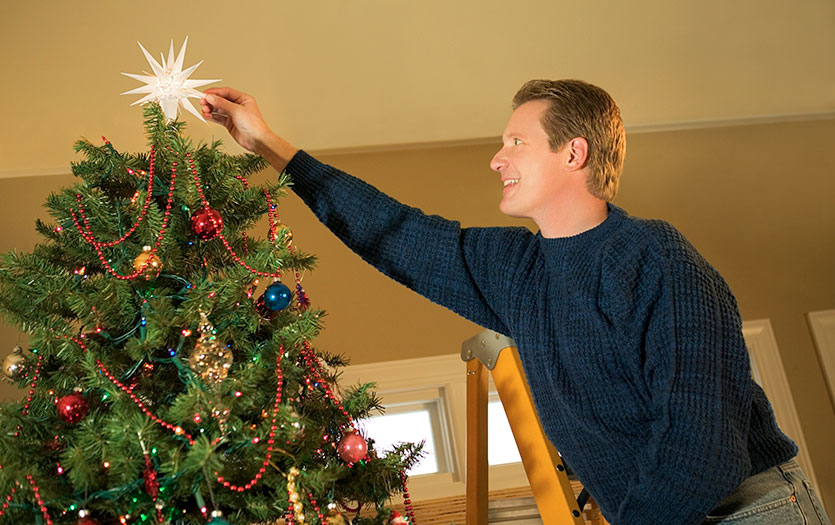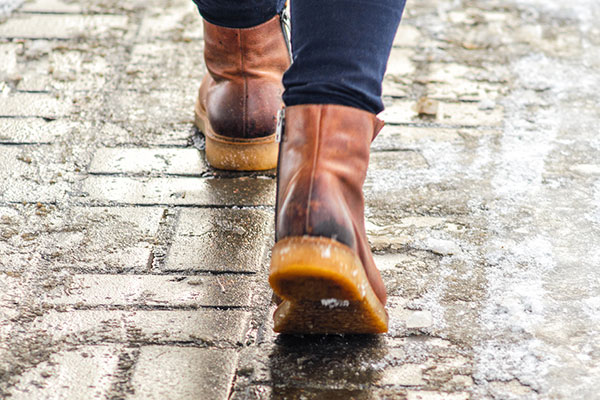
The first snowfall is an exciting time of year. The sheer anticipation of touching the sparkling snow and the exhilaration of the wind whipping past as you race down the hill can be thrilling, but this winter weather activity can also lead to some severe injuries if unprepared. For this reason, we asked Chelsey Caldwell, MD, PPG – Pediatrics, to share some safety strategies for families to follow as they hit the hills this winter.
What is sledding safety?
Sledding safety refers to the measures you can take to protect your child or yourself from unnecessary injuries that can occur during this popular winter activity. Sledding is a fun way to keep children active and engaged, but it’s also important to follow some safety guidelines to ensure everyone stays safe.
Why is sledding safety so important?
According to a study published in the Clinical Journal of Sports Medicine, children accounted for nearly 70% of 220,000 sledding injuries over a ten-year period. This is why following sledding safety guidelines are so important. It can lead to severe injury and even death. Furthermore, sledding injuries are more likely to occur in rural areas than urban ones because they usually happen in the countryside.
What are the most pertinent sledding safety tips for families this winter?
While there are several ways to be safe when sledding, we compiled a list of the ones we find to be the most important. Let’s take a closer look at each one:
- Gear up: Because of the potential for severe injury while sledding, you might consider having your child wear a helmet to protect their head as much as possible.
- Dress warm: Temperatures can get very cold when sledding, so be sure to dress yourself and your child warmly to prevent frostbite and hypothermia. Snowsuits, winter coats, hats, gloves, warm socks and snow boots are all crucial attire when playing in the cold and snow.
- Stay in the sun: It’s completely normal to lose track of time, but it’s imperative to only sled during the day or in the daylight. Sledding at night or in the dark is not only dangerous, but it leaves participants exposed and vulnerable to accidents and injuries.
- Location is key: Before heading out, make sure you choose a safe place for your sledding adventure. It’s best to steer clear of any area littered with trees, fences and poles, or near ponds, lakes and roads.
- No motor vehicles: Never pull a sled behind a moving vehicle such as a car, snowmobile or four-wheeler. It’s not only unsafe but also increases everyone’s risk of injury.
- Take a seat: Never stand on a sled. Instead, always sit down in the sled face-forward with your feet downhill. This will decrease the risk of a severe head injury.
- Adults must be present: While it may seem tempting to drop your children off at the local hill, especially if they’re older, it’s crucial that there is always adult supervision. Designating a go-to adult is also a great idea in case of an emergency. Also, children five years of age and under should always sled with an adult.
What are some potential risks that could arise from sledding?
It’s normal for children to get some bumps and bruises when playing, but some serious injuries could occur when sledding. Two of the most prevalent categories include:
- Head injuries: One of the most concerning wounds that can come from sledding is a head or brain injury. If you lose control of the sled and crash into something, you could have a concussion or traumatic brain injury. Furthermore, concussions can cause headaches, blurry vision, nausea, vomiting or dizziness. Other more severe head traumas can cause loss of consciousness and seizures.
- Orthopedic injuries: This type of injury can include broken bones (particularly in the arms or legs), wrist and/or ankle sprains, and dislocated joints.
What steps should someone take if there is a sledding emergency?
In case of a sledding emergency, it’s crucial that someone, preferably a go-to adult, have a cell phone on hand if the need to call 911 arises. Moreover, be aware of your location, particularly if you are sledding in the country. This will help emergency responders find you more easily. Lastly, remember to seek medical care as early as possible if you are concerned about a concussion or other bodily injuries.
Final thoughts
As you head out for some winter fun, remember to keep these safety strategies in mind while enjoying yourself and making memories as a family!



